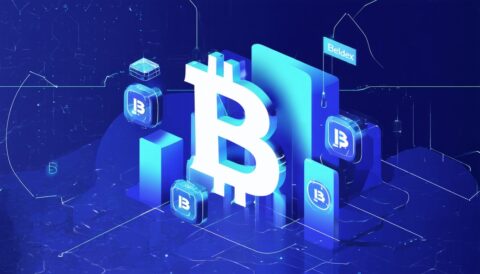Volatility is a familiar companion in the world of cryptocurrencies, but technical disruptions can be especially jarring. Among the most innovative blockchain platforms, Solana has stood out for its speed and low transaction costs. Yet even this high-performance network is not immune to outages. When users search for “why is Solana down”, they’re often met with confusion and concern. Tracing the reasons behind Solana’s occasional slowdowns and outages requires examining its architecture, workload patterns, and community response.
The Promises and Realities of Solana’s Architecture
Solana’s appeal lies largely in its technical design. The chain’s unique blend of Proof of History (PoH) and Proof of Stake (PoS) allows the network to process tens of thousands of transactions per second (TPS)—often outpacing rivals like Ethereum. However, scaling at this magnitude introduces vulnerabilities. The complexity arises not just from the technology but also from how real-world usage can expose unforeseen stress points.
Proof of History: Speed and Its Side Effects
Solana’s Proof of History is a cryptographic timestamping mechanism enabling parallel processing of blocks. This increases throughput dramatically but also makes the chain susceptible to performance bottlenecks.
- High throughput means block validation falls heavily on hardware and network consistency.
- A sudden surge in transaction volume—common during NFT launches or popular DeFi events—can strain nodes to their limits.
- When core validators or RPC servers (gateways that allow programs and wallets to interact with the chain) cannot keep up, transaction finality can stall across the network.
Complex Smart Contracts and Network Load
Unlike older networks that place stricter limits on contract complexity, Solana allows for highly sophisticated and resource-intensive programs. While this flexibility is a boon for developers, it can also produce unpredictable network load.
During high-profile NFT mints or bot-driven exploits, a flood of automated transactions can spike compute requirements. In some cases, these surges have overwhelmed consensus and led, ultimately, to network stalls.
“Solana’s design for maximum throughput exposes new classes of failure. During coordinated bot attacks, critical consensus messages can get drowned out by superfluous transactions—forcing drastic action from node operators.”
— Blockchain Infrastructure Researcher
Common Causes Behind Solana Outages
Understanding “why is Solana down” involves recognizing both the technical and human factors at play. While each incident may stem from unique triggers, several recurring themes have emerged.
1. Sudden Volumes and Spam Transactions
Multiple outages have been tied to overwhelming volumes of automatic, bot-generated transactions. For example, high-interest events—such as NFT launches like the “Degenerate Ape Academy” in 2021—bombarded the network with more traffic than it could handle in real time.
The distinctions worth noting:
– Genuine user activity vs. transaction spam is difficult to police in decentralized environments.
– Spam can clog the “mempool” (the holding space for pending transactions), blocking critical validator messages.
2. Bugs in Core Protocol or Validator Software
As with any complex distributed system, occasional bugs or oversights can slip through. Solana has experienced validator crashes and consensus stalls when errors are triggered by edge-case conditions.
A real-world example: In February 2023, an update led to a consensus failure, forcing operators and the Solana Foundation to coordinate a manual node restart. Although centralized interventions like this are controversial, they have been necessary to restore stability.
3. DDoS-like Exploit Attempts
Some disruptions have resembled distributed denial-of-service (DDoS) attacks, even if not explicitly malicious. Heavily automated arbitrage bots or flawed DeFi protocols can flood the chain with redundant operations, depleting hardware and bandwidth resources.
- The fallout is not only downtime but also degraded performance—users may notice lengthy confirmation times and failed transactions for hours afterward.
4. Network Upgrades and Coordination Challenges
Upgrading a global blockchain is a delicate operation. Even routine updates can cause “forks” (divergence in the ledger state) or force manual intervention. Solana’s rapid development cycle means node operators must quickly adapt to software changes — leaving room for mismatches and temporary disconnects.
5. Insufficient Decentralization in Critical Paths
While Solana aspires to decentralization, the relatively high hardware requirements mean the validator set is smaller than those of some competitors. Points of centralization—such as reliance on a handful of core validators or RPC providers—can become bottlenecks during crises.
The Ripple Effects: What Outages Mean for Users and Developers
Network downtime in blockchain is more than an inconvenience. For users, especially during periods of high market volatility, the inability to transfer, stake, or swap assets can have meaningful financial consequences. For developers, each outage is a learning opportunity, but also a reputational risk.
Impact on Ecosystem Projects
Many leading DeFi protocols and NFT platforms are built atop Solana. Outages often compel these dApps (decentralized applications) to suspend services or delay launches. This can erode user trust even among diehard supporters.
On the other hand, recurring outages have galvanized the community to support core improvements, such as:
– More resilient validator software
– Rate limiting for spam prevention
– Enhanced telemetry for early warning of bottlenecks
Solana Foundation’s Response and Roadmap
The Solana Foundation, alongside its network of independent contributors, has taken a proactive approach to crisis management. Public post-mortems—detailing the root causes and planned remedies—have become more frequent following major incidents.
Key steps in progress include:
– Sequential software updates (often labeled “priority releases”)
– Coordinated testnets for stress-testing planned upgrades
– Introduction of fee markets to better prioritize genuine user transactions
As a tangible sign of resilience, after every significant outage, Solana’s core team has succeeded in restoring service, often within hours. But persistent challenges highlight the importance of vigilance and transparent communication.
How Solana Compares to Other Blockchains on Reliability
No blockchain is immune to downtime. However, the frequency and public visibility of Solana outages have earned outsized scrutiny. Comparing Solana’s performance to other protocols demonstrates the broader context.
Ethereum and Layer 2s
Ethereum, due to its slower block times and high gas fees, has avoided large-scale network stoppages. But it often suffers from bottlenecks and expensive transactions during peak activity. Layer 2 solutions (like Arbitrum and Optimism) add scalability but introduce their own complexities and potential failure points.
Binance Smart Chain and Others
Blockchains with similar high-throughput designs, such as Binance Smart Chain, also face network congestion and periodic service outages — though the mechanisms and ecosystem responses may differ.
Unique Design, Unique Challenges
Solana’s focus on speed delivers competitive advantages but introduces unique challenges. The chain is, in a sense, “breaking new ground” — and growing pains are not unexpected for any rapidly evolving protocol.
Restoring Trust After a Network Outage
In fast-moving sectors like crypto, trust is paramount. Each time Solana goes down, industry observers ask whether high throughput is worth the risk. Restoring network functionality quickly, communicating openly, and empowering community-led improvements are all critical to long-term resilience.
Communication and Transparency
Effective crisis management hinges not just on technical fixes but on keeping stakeholders informed. The Solana Foundation’s practice of issuing incident reports and post-mortems has offered rare transparency compared to more opaque competitors.
User Education and Risk Management
Educated users are less likely to panic when facing unexpected disruptions. Exchanges, wallets, and dApps have embraced proactive messaging, letting users know when slowdowns are network-wide versus local issues.
“A transparent incident response and dedication to long-term fixes matter more to developer and user confidence than any single outage event.”
— Blockchain Security Consultant
Conclusion: Charting a Path Forward for Solana
Solana’s occasional downtime is a product of scaling ambition — and a reminder that no blockchain is infallible. Each outage, while disruptive, has also accelerated improvements in software robustness and operational preparedness. For investors, developers, and users, understanding the origins of why Solana is down fosters a more realistic expectation of what high-performance blockchains can—and cannot—deliver as the ecosystem matures.
FAQs
What causes Solana to go down most often?
Solana outages are frequently triggered by sudden surges in transaction volume or spam attacks, which overwhelm the network’s processing capacity. Other causes include software bugs and problematic automated trading or NFT-related activities.
How long do Solana outages usually last?
Most Solana outages have lasted a few hours, as core engineers and validators rapidly coordinate recovery. The duration can vary based on the root cause and complexity of the fix required.
How does Solana recover from a network outage?
Recovery typically involves coordinated action by validators, who may restart network nodes and roll out emergency software patches. The Solana Foundation often provides real-time updates and post-incident analyses.
Is Solana more prone to downtime than other blockchains?
Solana’s focus on speed and complexity makes it more susceptible to certain types of outages compared to older networks like Ethereum. However, all major blockchains face technical challenges as they scale.
What improvements are being made to prevent future outages?
Ongoing upgrades include better spam filtering, stronger validator software, and fee market mechanisms to prioritize legitimate transactions. The community and foundation are investing in enhanced testing and more rapid incident response.



